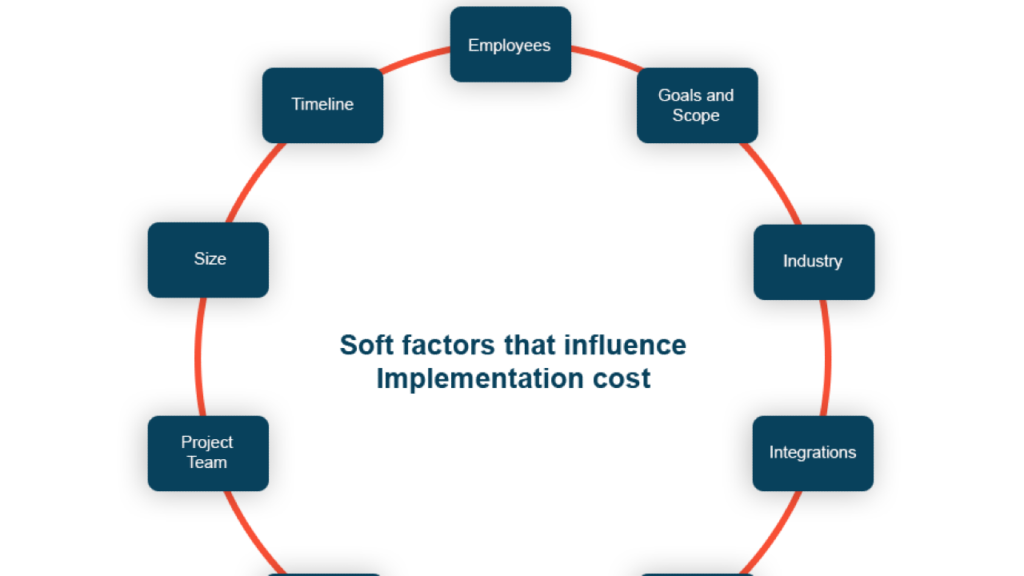While ERP solutions have become an integral part of enterprise operations, planning for successful implementation of the ERP is still a mammoth task. Selection of right solution, right implementation partner, and right implementation model, therefore, have considerable impact on the project. Choosing the right solution ensures streamlined business processes, maximized business opportunities, and greater capacity to drive innovation. Similarly, choosing the right implementation partner and model ensure timely implementation and no unpleasant surprise related to timelines, budgets, and resources during the implementation cycle. In order to save the organizations from such unpleasant surprise during the implementation cycle, implementation partners must help them recognize all possible cost heads, including the hidden cost heads, before the project rollout.
Explicit Versus Hidden Cost Heads
While factors such as Licenses and Subscription fee are explicit cost heads, there are some unanticipated cost heads that inevitably arise during the cycle of implementation. These hidden/soft cost heads have significant impact on the implementation cost of the project and its overall success.
Human factors such employees, leadership style as well process factors such size of project team, timelines, and so on fall under hidden or “soft” cost heads. Identifying these cost heads and gauging their impact on the overall implementation helps in accurate budgeting and setting right expectations with the involved teams.
How Hidden Cost Heads Impact the ERP Implementation
The impact of hidden cost heads on implementation will vary from one organization to another. For example, while employees’ reluctance to move to a particular ERP solution can affect the different stages of implementation – no organization/ERP consultant can ever estimate and say with certainty that there will be 45% resistance from employees will lead to 10% of increase in the implementation cost. However, once it is established that employees’ resistance could be a major deterrent to the project, proactive measures can to be taken to mitigate its adverse impact on the delivery timeline and minimize its impact on the overall project budget.

Similarly, size and scope of the project, the stage of process maturity when the project is being implemented, and the industry to which the organizations belongs contribute to the complexity and cost of implementation. For example, if organization processes aren’t mature but the organization tries to nail down a standardized process in the ERP system, they are bound to face process conflicts in future and shell out extra money later to resolve this conflict.
Also, some industries, such as manufacturing, or supply chain inevitably have larger deployments than others – adding to the overall implementation cost. It is therefore critical for the organization and the implementation partner to look at each of the hidden cost heads in a qualitative fashion.
How to Holistically Look at the Fixed Cost Factors
Surprisingly, factors that are considered to be fixed or standard also vary a great deal if not enough thought has been given during budgeting for them. For example, if the organization is in Supply Chain Management sector and all the employees are going to use it for supply chain management related work, organization only needs to pay the base price of the supply chain module. Given that Microsoft has moved from a fixed licensing model to a more à la carte licensing structure, there is a scope for organizations to choose only what they need. So, now there is no point paying for everything or for any additional module if it is not going to be used ever.
When it comes to fix cost – another cost head that must be carefully planned is the services cost. Services cost, if not planned properly, can have huge, unnecessary burden on the overall implementation cost. In order to keep the services fee within limits, it is a good idea to freeze in the requirements internally before roping in a consultant for the project. The requirements should be divided into must-to-have requirements and good-to-have requirements, so that while preparing the costing sheet, the planner knows what probably can be taken off, if required.
The Right Implementation Model
Sometimes high services cost from the implementation partner becomes a deterrent for organizations when planning for ERP implementation/upgrade. Synoptek’s Dynamics Experts suggest two ways to tackle it. First is to freeze the requirements internally – into must-have requirements and good-to-have requirements – before an implementation partner is roped in for the project. This step gives clarity to the organization as to what can be excluded if need be. The second point they suggests is using an implementation model that is hybrid in nature, including on-shore and off-shore consultants, which can be followed from the analysis stage through the deployment stage. This model, when implemented properly, helps organization save overhead in terms of services cost.






